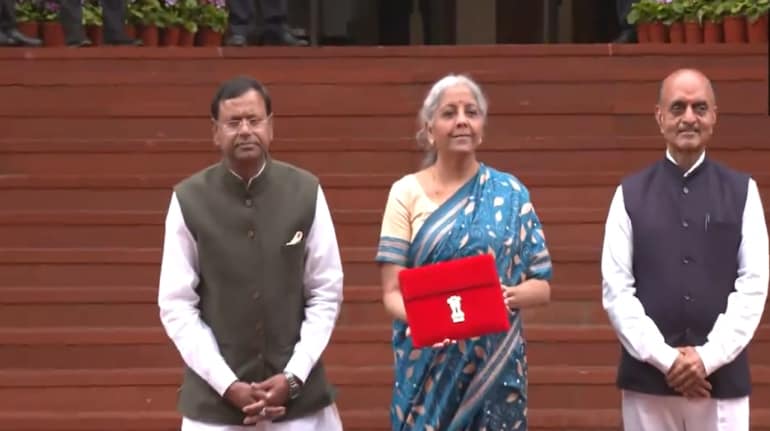
"The future trajectory remains clouded with uncertainties arising from continuing geopolitical conflicts, possibility of further supply disruptions, volatile financial market conditions and domestic weather related factors," Das said.
"The need of the hour is calibrated monetary policy action, with a clear understanding that it is required for sustaining our medium-term growth prospects," he added.
In the latest policy review that concluded on Sep. 30, the RBI left its inflation aim for Asia's third largest economy unchanged at at 6.7% for this fiscal year, as it flagged persisting pains from food price pressures and amid global risks to costlier imports.
Inflation is expected to remain elevated at above the central bank's 6% threshold in the fiscal second half, Das said while announcing the policy decisions.
The Monetary Policy Committee also increased the benchmark rate by 50 basis points to 5.9%, in a bid to bring inflation to its comfort zone and in line with aggressive policy tightening by key global central banks. This was the fourth straight rate hike and the third half-percentage point hike. The central bank has raised rates by 190 bps since May.
The MPC members, except for Jayanth R. Varma, had also voted for remaining focused on withdrawal of accommodation to ensure that inflation remains within the target going forward, while supporting growth.
In fact, the latest inflation reading also adds to the pressure on the rate-setting panel to go for further steep rate hikes. India's retail inflation hit a five-month high of 7.41% in September, quickening from 7% in the previous month, driven by higher food prices. Food inflation rose 8.60% in September, accelerating from 7.62% in August.
The retail inflation print stayed above RBI's tolerance ceiling of 6% for the third straight quarter and the Mint Street will now have to explain to the government the reasons for the failure to bring it within the 2-6% mandate and the remedial measures to fix it.
Das said the world is in the eye of a new storm originating from aggressive monetary policy tightening and even more aggressive forward guidance from advanced economy (AE) central banks.
Deputy Governor Michael Debabrata Patra also flagged that the current levels of inflation across the globe haven't been seen n decades and global policy makers are thus racing in lockstep to raise rates by much more than their own historical experience.
"They are balancing the prospects of a recession against the risks of inflation remaining elevated and persistent. Given their mandates and the credibility they work hard to earn (in the pandemic, they prioritised revival over price stability which cannot be faulted, but it is), they prefer now to err on the side of hawkishness in their determination to bring inflation to targets, fearing a 1970s redux," he said.
Patra said the monetary policy has to perform the role of "nominal anchor" for the economy as it charts a new growth trajectory. The focus should be on being time consistent in aligning inflation with the target. In this context, front-loading of monetary policy actions can keep inflation expectations firmly anchored and 14 balance demand against supply so that core inflation pressures ease, he said.
Shashanka Bhide also echoed the comments and said to align the inflation expectations with the policy target rate of inflation, further increase in policy rates is necessary at this juncture.
The minutes showed, Shashanka Bhide, Jayanth R. Varma, Rajiv Ranjan, Michael Debabrata Patra and Shaktikanta Das voted to increase the policy repo rate by 50 basis points. However, Ashima Goyal voted to increase the repo rate by 35 basis points.
Goyal said taking Indian repo rates too high imposed heavy costs in 2011, 2014 and 2018. A slowdown in credit and investment was aggravated and sustained. Thus, it is necessary to go very carefully now that forward-looking real interest rates are positive, she said.
She also said it is necessary to monitor the softening of commodity prices. Also, high uncertainty calls for slow steps and if demand slows anyway, less policy tightening will be required.
"When behaviour is forward-looking front loading can pre-empt inflationary pressures. But if lagged effects of monetary policy are large, as in India, overreaction can be very costly. Harmful effects become clear too late and are difficult to reverse. Gradual data-based action reduces the probability of over-reaction," she said.
It is important for policymakers to stay calm to moderate fear and over-reaction, Goyal said.
Meanwhile, Varma, who is typically seen to have a different opinion on stance, said the MPC should raise the policy rate to 6% and then take a pause.
"A pause is needed after this hike because monetary policy acts with lags. It may take 3-4 quarters for the policy rate to be transmitted to the real economy, and the peak effect may take as long as 5-6 quarters," he said.
Varma said it is too early to know if the recent policy actions are sufficient. It may turn out that even more monetary tightening is required, but it does make sense to wait and watch to see whether a repo rate of around 6 percent is sufficient to glide inflation back to target, he added.
"In my view, it is dangerous to push the policy rate well above the neutral rate in an environment where the growth outlook is very fragile," he added.
However, RBI governor Das said Indian economy presents a picture of resilience with macroeconomic and financial stability. Economic activity is steadily improving and high-frequency indicators are showing continued momentum in activities. But, global factors are putting pressure on external demand, he said.
"Whatever be the unfolding scenario, India is expected to be among the fastest growing major economies in the world...We should remain vigilant on the inflation front while strengthening our macroeconomic fundamentals."
India's inflation trajectory remains clouded, external headwinds dampen domestic momentum: RBI Governor Da - Economic Times
Read More

No comments:
Post a Comment